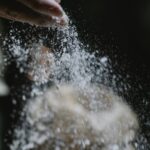A company focused on adopting regenerative agriculture practices to support sustainability while maintaining high-quality ingredient processing. Regenerative agriculture prioritizes restoring soil health and biodiversity, reducing environmental impact, and ensuring high-quality outputs. However, these benefits come with complex cost structures, particularly in the context of ingredient processing. The company needed to examine the various costs involved in sourcing raw materials from regenerative agriculture, processing ingredients, and managing the overall production and supply chain
The Challenge
While regenerative agriculture is environmentally beneficial, it brings several challenges that impact cost structure, especially in ingredient processing:
- Raw Materials Cost: Using regenerative practices requires specific seeds, soil amendments, and sustainable farming techniques, which may be more costly than conventional agriculture. These costs directly affect ingredient sourcing
- Processing Quality and Compliance Costs: Ensuring high-quality ingredients requires additional quality control measures, certifications, and regulatory compliance, impacting processing costs
- Packaging Materials Cost: Sustainable packaging, often required for products aligned with regenerative practices, can be more expensive due to the use of biodegradable or recycled materials
- Labor (Direct) and Utility Costs: Ingredient processing involves direct labor for operations and utilities for machinery, both of which contribute to production costs
- Subcontracting and Indirect Labor Costs: The need for specialized tasks, often subcontracted, and indirect labor for support roles can increase operational costs
- Sanitization and Maintenance Costs: The strict standards required in food production and processing lead to additional costs for cleaning, maintenance, and factory common charges
- Conversion Costs: This encompasses all costs related to transforming raw ingredients into final products, including labor, utilities, packaging, and overhead. Ensuring efficient conversion without compromising quality is essential
- Depreciation of Equipment: As processing machinery ages, depreciation contributes to the overall cost structure
- Supply Chain Costs: Transportation and logistics for raw materials and processed ingredients from regenerative sources can be higher due to varied sourcing locations
Given these complexities, the F&B company required a comprehensive cost structure analysis to identify cost-saving opportunities while maintaining the integrity of ingredient processing.
The Objective
The F&B company aimed to conduct a detailed cost structure analysis to understand the financial implications of regenerative agriculture and ingredient processing, focusing on conversion costs. The objectives were to:
- Analyze Cost Components: Examine costs associated with raw materials, conversion, labor, utilities, packaging, and overhead
- Identify Cost Optimization Opportunities: Find ways to reduce conversion costs without sacrificing product quality or sustainability
- Assess Production Efficiency and Profitability: Determine how conversion costs affect production efficiency and overall profitability
- Develop Strategies for Cost Reduction: Based on the analysis, propose strategies to optimize conversion costs and improve overall production efficiency
Our Approach and Solution
Exorixy designed a comprehensive research approach to achieve these objectives, incorporating primary research with industry experts and detailed cost structure analysis. The key elements of our approach and solution are as follows:
- Primary Research with Industry Experts: Exorixy conducted interviews with 10–15 industry experts, including agronomists, production specialists, and operations managers. These experts provided insights into conversion costs and broader cost structure challenges in regenerative agriculture and ingredient processing
- Cost Structure Analysis: The team analyzed key cost components contributing to conversion costs, including raw materials, direct and indirect labor, utilities, packaging, maintenance, and depreciation
- Production and Operations Analysis: Exorixy examined production shifts, total annual production, production per kg, conversion costs, and overhead expenses to understand their impact on profitability
- Supply Chain and Logistics Analysis: The team assessed transportation and logistics costs, focusing on optimizing supply chains to reduce conversion costs
- Recommendations for Cost Optimization: Exorixy proposed strategies for reducing conversion costs, such as streamlining production processes, optimizing labor allocation, and improving energy efficiency
Key Outcomes and Impact
Exorixy’s comprehensive cost structure analysis led to significant improvements in the F&B company’s conversion costs and overall profitability. Here are the key outcomes and their impact:
- Improved Raw Materials Cost Management: By refining ingredient processing, the F&B company minimized waste and improved yield, leading to a 10–15% reduction in raw material costs. This was achieved by optimizing processing techniques and reducing scrap during the transformation of raw materials into finished products
- Reduced Conversion Costs: By optimizing production processes, streamlining labor, and implementing energy-efficient practices, the company achieved a reduction in conversion costs
- Increased Production Efficiency: The analysis revealed ways to improve production shifts and labor utilization, leading to an increase in production efficiency
- Lower Packaging Costs: The company reduced packaging costs by 5–10% by sourcing more cost-effective sustainable materials without compromising on environmental goals
- Improved Supply Chain Efficiency: The analysis of supply chain and logistics costs helped the company achieve a reduction in transportation and logistics expenses, further lowering conversion costs.




